Monopolistic Competition
It is a market with many competing firms where each firm has a little bit of market share. Firms have the ability to set their own prices.
Assumptions
Many, many firms produce in a monopolistically competitive industry.
Each firm produces a product that is differentiated (i.e., different in character) from all other products produced by the other firms in the industry.
There is free entry and exit of firms in response to profits in the industry.
Consumer and producer have imperfect knowledge of the market.
- Examples, car mechanics, salons, plumbers and jewelers.
- Toothpastes and toilet papers are examples of differentiated products.
Revenue Curves
In a monopolistic competition, a firm will face a downward sloping demand curve. The MR curve lies just below the demand curve.
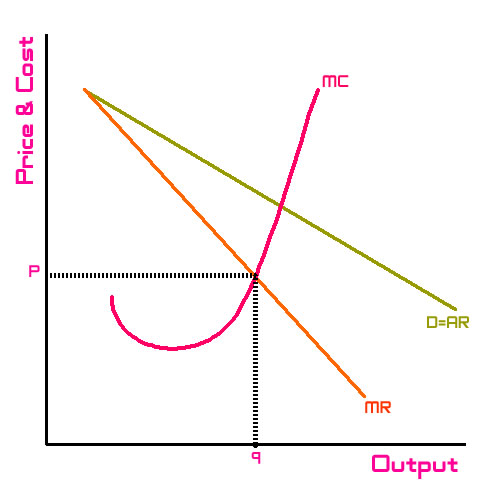
The demand curve is more elastic and flatter than monopoly demand curve. The reason being that though firms are price makers to a certain extent, their demand is still relatively elastic since there are many, slightly different, substitutes.
The firm produces at profit maximising level i.e. MC=MR.
The firm will produce an output q and sell that output at the price P.
Short run Profit & Loss
In the short run a monopolistically competitive firm will produce at the profit maximising level MC=MR where the AC is below the AR curve. If the firm’s AC is above the AR curve, the firm will experience losses.

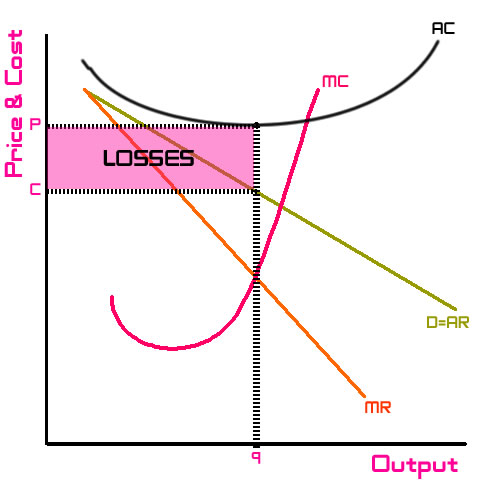
Long run Normal Profit
In the long run a monopolistic competitive firm will have normal profit.
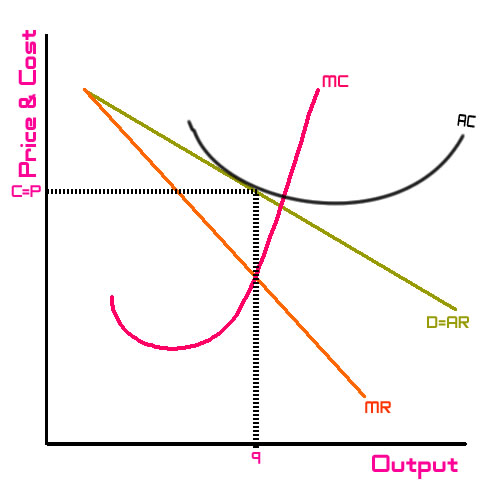
Reason
There is freedom to entry and exit; Due to this , when firms make abnormal profits in the short run, it will attract more firms in the industry, the supply will increase, prices will come down and firms prices will come it will return to long run normal profit. Similarly, if firms are making losses, they will exit the industry, this will lead to fall in supply, leading to rise in prices, leading to normal profit for firms.
Non Price Competition
Non-price competition is where "one firm tries to distinguish its product or service from competing products on the basis of attributes like design and workmanship"
Non-price competition typically involves
- Promotional expenditures such as advertising, selling staff, the locations convenience, sales promotions, coupons, special orders, or free gifts
- Marketing research,
- New product development,
- Brand management costs.
Productive and allocative efficiency in Monopolistic Competition
Short Run
In the Short Run a monopolistically competitive firm will neither achieve allocative efficiency nor productive efficiency. As the diagram show, productive efficiency is at q1 and allocative efficiency level of output is q2. However, in a monopolistically competitive market, a firm is producing at profit maximising level q does not achieve any of the efficiency.
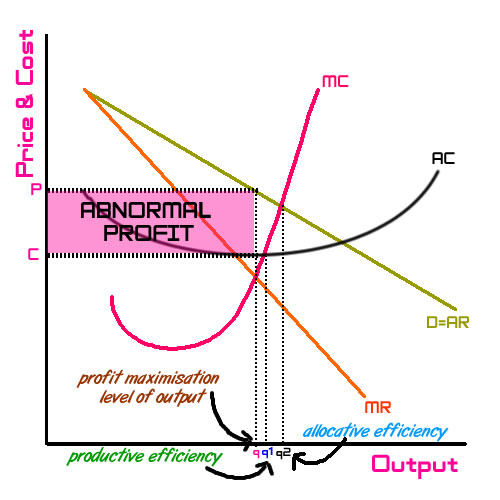
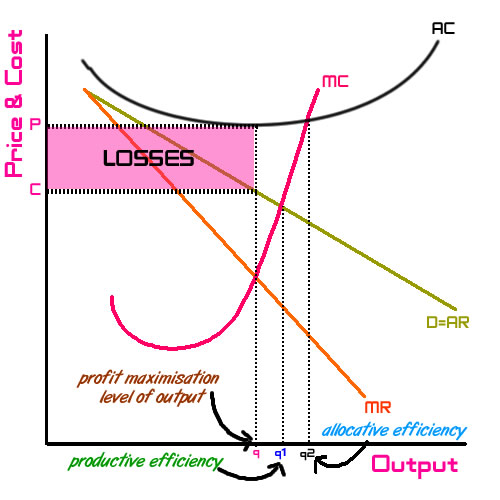
Long Run
In the long run too, a monopolistic competitive firm will not achieve any of the efficiencies. In the diagram below, the firm is producing at the profit maximising level of q, does not achieve allocative efficiency level of output q2, or productively efficient level of output q1.
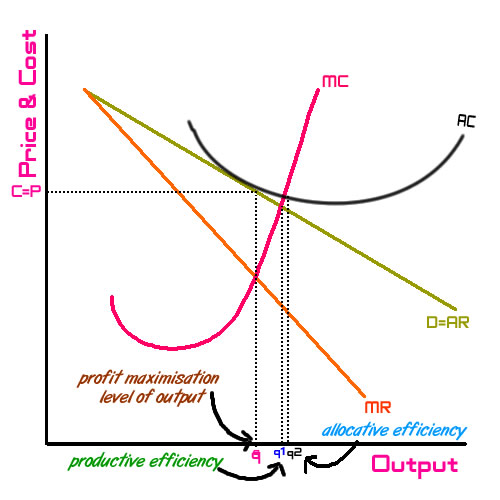
Comparison between Perfect Competition and Monopolistic Competition
|
|
Perfect Competition |
Monopolistic competition |
|
Number of firms |
Infinite |
Many |
|
Market power |
None |
Low |
|
Elasticity of demand |
Perfectly elastic |
Highly elastic (long run) |
|
Product differentiation |
None |
High |
|
Excess profits |
No |
Yes/No (Short/Long) |
|
Productive Efficiency |
Yes |
No |
|
Allocative Efficiency |
Yes |
No |
|
Profit maximization condition |
P=MR=MC |
MR=MC |
|
Pricing power |
Price taker |
Price setter |





